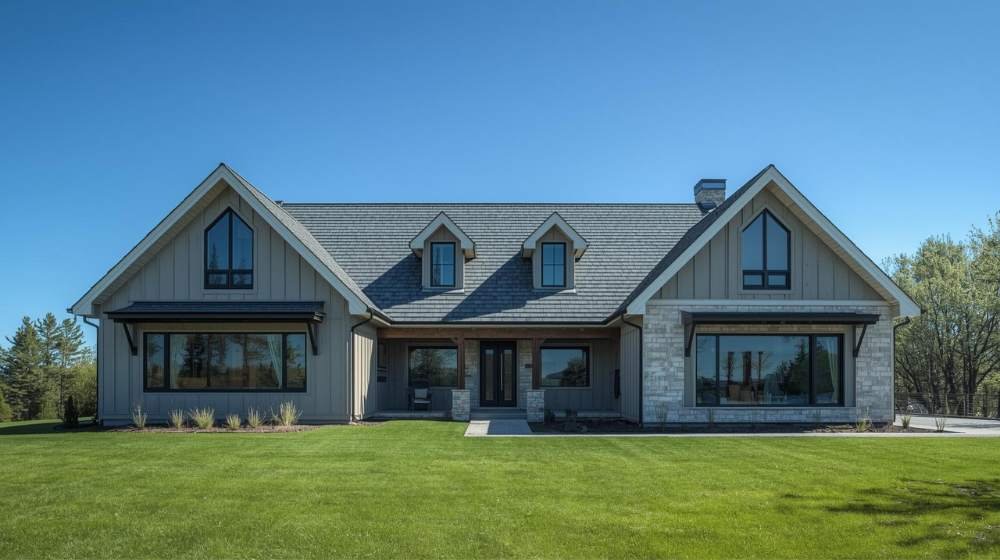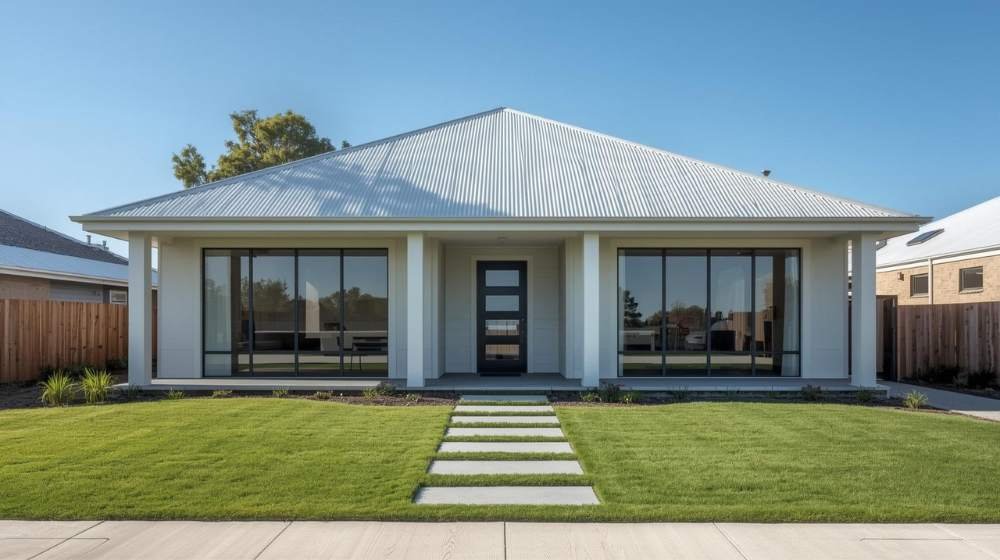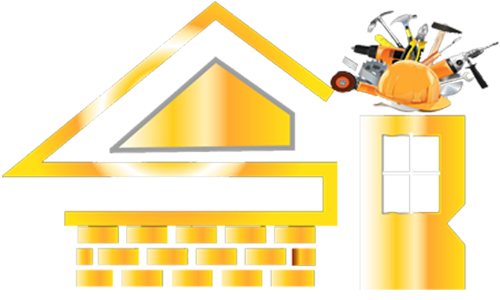Have you ever wondered if a gable roof is the right choice for your home in Brooklyn? With its iconic triangular design, gable roofs are a popular option, but are they the best fit for your needs? If you’re building or renovating a home in Brooklyn, it’s important to understand the Advantages and Disadvantages of Gable Roof before making a decision.
In this blog post, we’ll explore the benefits of gable roofs, like improved drainage, energy efficiency, and extra roof space. But we’ll also dive into some of the potential drawbacks, such as their vulnerability to high winds or snow buildup. By the end of this post, you’ll have a better idea of whether a gable roof is the right roofing style for your Brooklyn home. Stick around to learn all the essential details!

What is a Gable Roof?
A gable roof is a classic roof design characterized by two sloping sides that meet at the top to form a ridge, which creates a triangular shape at each end of the building. It is one of the most popular and simple roof designs in residential architecture. This design not only provides a clean, stylish look but also allows for good water drainage, which makes it practical in areas with heavy rainfall or snow. The shape of the gable roof can vary depending on the pitch.
Advantages and Disadvantages of Gable Roof
When considering a gable roof for your home, it’s important to weigh both its advantages and disadvantages. This roof style has been a favorite for many homeowners due to its simple design, effective drainage, and ability to provide extra space. However, like any roofing system, it also has its challenges, such as vulnerability to wind and snow buildup. In this section, we’ll explore the benefits and potential drawbacks of a gable roof to help you make an informed decision.
Advantages of Gable Roof
Now, let’s explore the key advantages of gable roofs. These benefits make gable roofs a popular choice for many homeowners, especially those in Brooklyn.
Simple and Cost-Effective Gable Roof Designs
Here are few types of simple and cost-efficient gable roof designs, each with its unique features, advantages, and ideal applications:
1. Classic Front Gable Roof
- Description: The ridge runs parallel to the street, and the gable faces the front of the house, often seen in traditional or Colonial-style homes.
- Features:
- Symmetrical design with a prominent gable at the front.
- Gable walls often have decorative trim or windows.
- The ridge runs along the length of the house.
- Easy to recognize and visually appealing.
- Advantages:
- Enhances curb appeal with a balanced, attractive façade.
- Simple to construct and maintain.
- Provides natural light through front-facing windows.
- Works well for smaller homes and narrow lots.
- Ideal For: Traditional, Colonial-style homes, and anyone seeking a classic aesthetic.
2. Side Gable Roof
- Description: The ridge runs perpendicular to the street, and the gable is positioned on one of the sides of the building.
- Features:
- Two sloping roof planes meet at the ridge.
- Symmetrical design.
- Common in modern and minimalist home styles.
- Provides flexibility for additional features like skylights or dormers.
- Advantages:
- Cost-effective and quick to build.
- Works well for homes with a simple rectangular design.
- Offers more space in the attic for storage.
- Easy to modify and adapt for different designs.
- Ideal For: Modern homes, suburban houses, and structures with narrow or long plots.

3. Cross Gable Roof
- Description: Two gable roof sections intersect at right angles, creating a T or L shape.
- Features:
- Two separate roof planes meeting at a right angle.
- Multiple gable ends create architectural interest.
- Suitable for homes with multiple sections or wings.
- Provides flexibility in interior layout and design.
- Advantages:
- Adds depth and visual interest to the structure.
- Increases usable space in larger homes.
- Ideal for homes with a more complex layout.
- Provides excellent ventilation and light.
- Ideal For: Larger homes with multiple sections or extensions, and homes requiring a dynamic roofline.
4. Saltbox Gable Roof
- Description: This asymmetrical gable roof has one side longer and steeper than the other, often seen in early American homes.
- Features:
- One side of the roof is much longer and steeper than the other.
- Offers a distinct, uneven look.
- Seen in historic Colonial and New England-style homes.
- Perfect for maximizing attic space.
- Advantages:
- Ideal for snowy climates due to its steep slope.
- Adds historical charm to the building.
- Offers extra upper floor space for storage or living.
- Great for those looking for a unique, vintage aesthetic.
- Ideal For: Colonial-style homes, houses in snowy regions, and those seeking a historical or rustic feel.

Excellent Water Drainage
One of the standout features of a gable roof is its excellent water drainage. The steep slopes naturally guide rainwater, snow, and trash off the roof, which prevents water from pooling. This is especially important in places like Brooklyn, where heavy rain and snow are common. With proper design and installation, a gable roof can minimize the risk of leaks and water damage.
Increased Upper Space
A gable roof creates additional upper space, typically in the form of an attic. This space can be used for storage or even converted into a living area. It adds valuable square footage to your home. The design of the roof allows for a higher ceiling in the attic, offering more usable space compared to other roof types. This extra room can also help with better airflow and ventilation in the upper levels of your home.
Energy Efficiency
Gable roofs offer significant energy efficiency benefits, especially in Brooklyn’s climate. The design allows for natural ventilation, which helps reduce heat buildup in the upper space. This increased airflow can lower cooling costs during summer by preventing the roof space from becoming too hot.
With proper insulation, a gable roof can also help keep your home warm in the winter. It improves energy savings year-round. On average, homes with gable roofs can see up to a 10-15% reduction in energy costs.
Disadvantages of Gable Roof
In this section, we’ll dive into the disadvantages of gable roofs, so you can weigh the pros and cons before deciding if it’s the right fit for your home. While gable roofs have many benefits, they also come with some challenges that you should be aware of.
Vulnerability to High Winds
Gable roofs can be more vulnerable to high winds, especially in areas prone to storms. The exposed triangular ends of the roof make it easier for strong gusts to lift or damage the structure.
If the roof is not properly braced or secured, it can cause significant damage during heavy winds. This is an important consideration, especially for homes located in areas with frequent storms or high winds. Additional reinforcement may be required to minimize the risk of wind damage.
Snow and Ice Buildup
In regions with heavy snowfall, the steep slope of a gable roof can cause snow to build up quickly, especially on the lower sections. As the snow accumulates, it may slide off suddenly, potentially damaging gutters, windows, or landscaping below.
Ice dams can also form at the roof’s edge, which prevents proper drainage and causes water to back up under the shingles. This can lead to leaks or structural damage if not addressed. In areas with harsh winters, regular snow removal or ice prevention measures may be needed to maintain the roof’s integrity.
Limited Design Flexibility
While gable roofs offer a classic look, they can sometimes feel limiting if you’re seeking more intricate or complex architectural features. Unlike other roof types, such as mansard or gambrel roofs, gable roofs are fairly straightforward in design.
If you want unique features like rounded or curved rooflines, a gable roof may not be the best option. Additionally, a gable roof may not blend as seamlessly with some modern or unconventional architectural styles. This design simplicity can sometimes limit creativity for homeowners seeking more complex roof styles.
Maintenance Challenges
Gable roofs, especially those with steep slopes, can be difficult to maintain. Cleaning gutters, inspecting the roof, or making repairs often requires ladders or scaffolding. This can be time-consuming and potentially dangerous without the right equipment.
Additionally, the roof’s angles may make it harder to inspect or repair certain areas, especially for DIY homeowners. Regular inspections and maintenance are essential to avoid costly repairs or damage in the future.

Exposure to the Elements
The exposed gable ends of the roof make it more vulnerable to wear and tear from the elements. Wind, rain, snow, and UV rays can all cause deterioration over time, especially if the roof is not properly sealed or maintained.
These exposed areas are also more prone to damage from falling debris or pests. If the gable ends are not well-protected, they can develop issues like rot, discoloration, or even structural damage. Ensuring proper maintenance is key to preventing these problems.
Potential for Water Leaks
Gable roofs can be prone to water leaks if not properly sealed, particularly around the ridge or gable ends. Gaps in flashing or damaged shingles can allow water to seep into the roof structure. It leads to leaks and water damage.
This can be especially problematic during heavy rain or snowmelt. If left unaddressed, water damage can affect the ceiling, walls, and insulation, which leads to costly repairs. Regular inspections of the roofing materials and flashing are necessary to prevent leaks from occurring.
Why should you choose a professional roofing contractor?
Are you looking for an expert roofing contractor in Brooklyn, NYC? SR General Construction has you covered! Our business is located at 8807 Avenue B, Brooklyn, NY 11236, United States, in the Canarsie area.
We proudly serve all areas of Brooklyn with high-quality, durable roofing solutions. From new installations to repairs and maintenance, we provide the best service at affordable prices. Contact us and experience why we’re Brooklyn’s roofing experts!
FAQ
1. What are the advantages of a gable roof?
Gable roofs are cost-effective, easy to construct, and provide excellent water drainage. They also offer additional attic space and allow for better ventilation.
2. Are gable roofs suitable for areas with heavy snowfall?
Yes, the steep slope of gable roofs facilitates the shedding of snow. It reduces the risk of accumulation and potential structural damage.
3. Do gable roofs perform well in high wind conditions?
Gable roofs can be vulnerable to high winds due to their exposed ends. Proper bracing and reinforcement are essential to enhance their wind resistance.
4. What types of gable roof designs are there?
Common types include front gable, side gable, cross gable, and Dutch gable roofs. Each offers unique aesthetic and functional benefits.
5. How does a gable roof compare to a hip roof?
While gable roofs are simpler and more cost-effective, hip roofs offer better wind resistance due to their four-sloped design.
6. Can a gable roof be used in modern architecture?
Yes, gable roofs are versatile and can be incorporated into various architectural styles, including modern designs.
